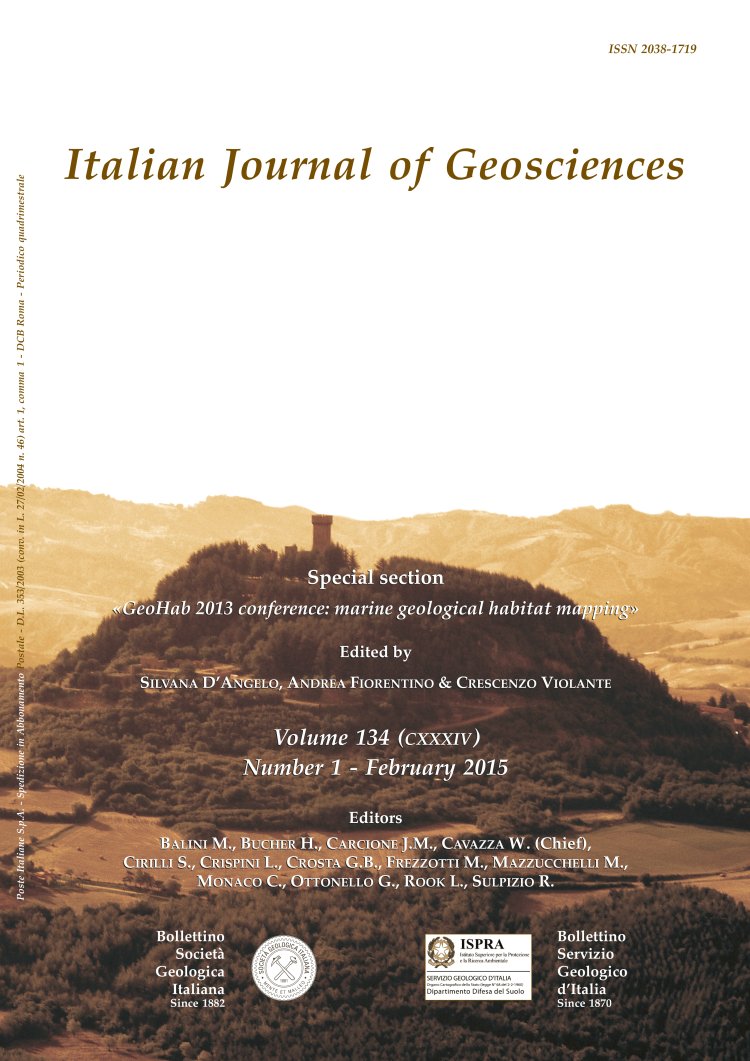
Textural features and isotope geochemistry of the Scillato travertine (north-central Sicily): genetic implications
Daniela Macaluso (*) & Giovanna Scopelliti (**)
(*) Dipartimento di Scienze della Terra e del Mare (DiSTeM),
Università degli Studi di Palermo, Italy; presently Eni E&P Division,
San Donato Milanese (MI), Italy.
(**) Dipartimento di Scienze della Terra e del Mare (DiSTeM), Università degli Studi di Palermo, Italy. Corrisponding author: Dr. Giovanna Scopelliti; Dipartimento di Scienze della Terra e del Mare; Via Archirafi, 36 - 90123 Palermo, Italy; Tel.: +39 091 23861622; Email: giovanna.scopelliti@unipa.it
DOI: https://doi.org/10.3301/IJG.2014.29
Volume: 134 (2015) f.1
Pages: 77-85
Abstract
The travertine deposit, outcropping near the Scillato town (north-central Sicily), was originated by precipitation of calcium carbonate from the Scillato springs, documented as bicarbonateenriched waters due to dissolution of the Madonie mountains carbonate rocks. This deposit is today well represented by the Travertine Cave, essentially constituted by stalactites and stalagmites in which travertine typically appears laminated with alternation of light and dark laminae. Mineralogical analysis have revealed the almost exclusive presence of calcite and observation under the polarized-light microscope showed different textural features, like presence of debris and porous portions, micritic portions, and crystalline concretionated portions. The morphologic and textural features allow to conclude that the Travertine Cave formed in a "waterfall" depositional environment in which vegetation and cyanobacteria played a key role. Moreover, the carbon and oxygen stable isotopes determination has provided δ18O and δ13C values varying in correspondence of alternating laminae, suggesting that calcium carbonate precipitation is seasonally controlled.
Keywords
Get Full Text